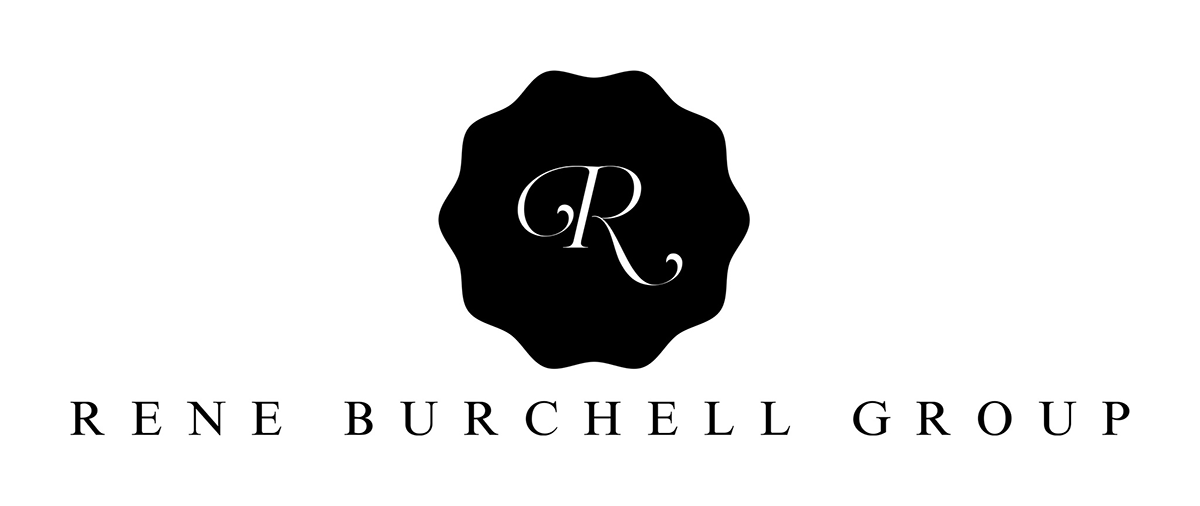Buying a home is one of the biggest financial decisions you will ever make. While it can be overwhelming at times, it is also a very rewarding experience. You likely have been looking at homes on the market for a while. You have in mind the upgrades and amenities you want in your new home. But, first you must be approved for a mortgage loan. Knowing how the home buying process works and being able to anticipate what is expected of you will help the process move along smoothly and will help you avoid surprises.
Mortgage Loan Pre-Approval
 Once you decide that the time is right to buy a home, you are no doubt excited about looking at all the homes on the market. You may already have some idea of what you can afford. If you’re at the point where you just want to casually look for homes in your market, but you’re not quite ready to buy a home, then you should think about getting pre-qualified for a home loan. This process is simple. You’ll want to get pre-qualified, so you’ll know approximately what you can spend on a home. There’s no need in looking at homes which you cannot afford. To get pre-qualified, all you need to do is call up your lender and provide them with a snapshot of your finances. Include all your income, debts and assets. This process can be completed on the phone or over the internet. Once your lender analyzes your finances, they can give you a rough estimate on what you can afford.
Once you decide that the time is right to buy a home, you are no doubt excited about looking at all the homes on the market. You may already have some idea of what you can afford. If you’re at the point where you just want to casually look for homes in your market, but you’re not quite ready to buy a home, then you should think about getting pre-qualified for a home loan. This process is simple. You’ll want to get pre-qualified, so you’ll know approximately what you can spend on a home. There’s no need in looking at homes which you cannot afford. To get pre-qualified, all you need to do is call up your lender and provide them with a snapshot of your finances. Include all your income, debts and assets. This process can be completed on the phone or over the internet. Once your lender analyzes your finances, they can give you a rough estimate on what you can afford.
The next step in the home buying process is the pre-approval. Getting pre-approved for a home loan is much more involved and time-consuming. You’ll be required to complete a mortgage application. Your lender will also check your credit report and perform an in-depth analysis of your credit report and finances. Be prepared to hand over extensive documentation regarding bank accounts and other financial data. It’s important to avoid taking on any new debts during this time because new debts will change your financial picture and could hold up your loan or prevent you from obtaining the loan altogether.
One advantage of completing the pre-qualification and pre-approval process is that you can avoid the disappointment that comes with finding the perfect home only to discover you can’t afford it. Knowing right from the start just how much you can afford will ensure you’re only looking at those homes which you are able to purchase. Another advantage of getting a pre-approval is that you can make an offer on a home knowing you can get the loan. Your offer won’t be contingent upon financing which opens the door to faster negotiations and sellers who will take you seriously.
Home Appraisal
Because the home you want to buy is an investment for your lender, they are going to require an appraisal of the home. They do not want to lend you more than the home is worth. The lender wants to ensure that the home’s market value is higher than the selling price. This is because if you should default on your loan, the lender needs to be able to sell the home at a price that covers the loan, so they don’t lose money. If they lend you more than what your home is worth, they will lose money in the event you default on the loan.
It is the buyer’s responsibility to arrange and pay for the home appraisal. This process takes anywhere from three to 10 days. The average price for an appraisal is $350. It may be higher or lower depending on your market area. The appraisal fee can also be more expensive if the home is larger or includes more than one unit. Once the appraisal report is complete, it will be sent directly to your lender. You are entitled to receive a copy, but you will need to ask for it.
The appraiser will use comparable sales in your market area to determine the value of the home you’re buying. In determining the value, the appraiser will take into consideration the:
- appearance
- condition
- square footage
- amenities
If the property is appraised at a higher value than the selling price, then you’re good to go on your loan. If, however, it appraises for less than the selling price, then you have a few options. First, you can pay a larger down payment. It will need to be large enough so that the amount being financed is equal to or less than the value of the home. If you don’t have extra money for a down payment, then you can try to get the seller to come down on the selling price. If the seller refuses and you’re convinced this is the only house for you, you can dispute the appraisal. You can have your agent meet with the appraiser to go over the findings. You can also point out upgrades and amenities that the appraiser may have not taken into consideration. If you determine that the appraiser isn’t from your area, you may appeal that the appraiser doesn’t know the market and simply appraised the home too low for where it’s located. Finally, if these options fail, you can simply walk away from the deal and continue your search for a new home.
Credit Score and Debt to Income Ratio
 When obtaining a mortgage, it’s all about the numbers. Your finances will determine how much you can borrow or if you can get a loan at all. The first piece of data your lender will look at is going to be your credit score. Therefore, it’s important for you to know what your credit score is before you even begin house hunting. For instance, if your credit score is 600 then you should work on trying to get it to 700 or higher before you approach a lender about buying a home. Lenders typically like to see credit scores in the 700 to 800 range. You might still be able to get a mortgage loan with a lower score, but your loan terms may not be as favorable. With a solid credit score, you can expect lower interest rates and more favorable terms. So, if you’re credit score is on the low side, now is the time to start taking the steps to improve your score.
When obtaining a mortgage, it’s all about the numbers. Your finances will determine how much you can borrow or if you can get a loan at all. The first piece of data your lender will look at is going to be your credit score. Therefore, it’s important for you to know what your credit score is before you even begin house hunting. For instance, if your credit score is 600 then you should work on trying to get it to 700 or higher before you approach a lender about buying a home. Lenders typically like to see credit scores in the 700 to 800 range. You might still be able to get a mortgage loan with a lower score, but your loan terms may not be as favorable. With a solid credit score, you can expect lower interest rates and more favorable terms. So, if you’re credit score is on the low side, now is the time to start taking the steps to improve your score.
A lender will also examine your debt to income ratio. The debt to income ratio is a measure of how much of your monthly income is used to pay debts. To be approved for a mortgage, your DTI should be no higher than 36 percent. Keeping your DTI lower will show the lender you are responsible with your money and haven’t taken on more than you can comfortably pay. This will show them you are financially able to handle a mortgage. Your lender will calculate your DTI by dividing your monthly debts by your monthly gross income.
Since the DTI calculation often doesn’t include monthly obligations such as health insurance, food, transportation, utilities and other regular expenses, your lender may approve you for a loan without taking these expenses into consideration. It is up to you to determine if you are comfortable with the amount for which you’re approved and ensuring you can still pay your monthly obligations. Buying a home is exciting, but you need to keep your emotions in check. Realistic thinking will allow you to evaluate just how much you can afford and still be able to comfortably pay all your debts and regular expenses. You’ll want to ensure you keep your DTI as low as possible. To do this, you can:
- Avoid taking on more debt
- Avoid buying big ticket items on credit before buying your home
- Pay off as much debt as you can before applying for a mortgage
Closing Disclosure Form
One important document that the lender is required to provide you with at least three days before the loan closing is the closing disclosure form. This form is a five-page document that will state important details about your loan including:
- Loan terms
- Projected monthly payments
- Closing costs
- Escrow account details
The closing disclosure form will give details on all the closing costs and who is responsible for paying what. You will also see a chart which provides a comparison of the actual costs versus what was shown on the Loan Estimate. The document further explains details of the loan, including:
- If the loan is assumable
- If the loan has a demand feature
- The late fee penalty and when it will be imposed
- If there is a negative amortization feature
- If partial payments will be accepted
- That the lender will have a security interest in the property
The closing disclosure form is designed to give you all the details you need regarding your loan. It provides complete transparency in explaining the terms and conditions of your loan. If there’s something on the form which you do not understand, you can contact your lender and they can explain the details.
Mortgage Loan Underwriting
 Every mortgage loan that is processed must go through the underwriting process before final approval is granted. The lender uses the mortgage loan underwriting process to assess risk and ensures the buyer meets all the minimum requirements to obtain the loan. The underwriting process is lengthy and requires the lender to examine many documents from the buyer. The lender will build a file for the borrower that contains all the documents to be turned in to the underwriter. If any required documents are missing or incomplete, the file will be kicked back to the lender to gather the required information. This can be very disappointing because it can significantly delay the process.
Every mortgage loan that is processed must go through the underwriting process before final approval is granted. The lender uses the mortgage loan underwriting process to assess risk and ensures the buyer meets all the minimum requirements to obtain the loan. The underwriting process is lengthy and requires the lender to examine many documents from the buyer. The lender will build a file for the borrower that contains all the documents to be turned in to the underwriter. If any required documents are missing or incomplete, the file will be kicked back to the lender to gather the required information. This can be very disappointing because it can significantly delay the process.
The underwriter’s primary function is to assess risk. They will check the following thoroughly:
- Credit history
- Home appraisal
- Home survey
- Title search
- Verify employment and income
- Debt to income ratio
- Verify savings and down payment
- Ensure all conditions and requirements are met
The amount of time to complete the underwriting process depends on the type of loan for which you’re applying. FHA loans have more strict guidelines than conventional loans. Therefore, the underwriting process can take anywhere from just a few days to several weeks to complete. Dealing with an experienced lender who knows the underwriting process and is knowledgeable about the information needed for the underwriter will ensure the process goes along smoothly. To increase your chances of getting through the underwriting process without delays, you should do the following:
- Ensure you have all the required documents at the beginning of the process
- Do not apply for other types of credit
- Provide a rapid response to any requests from your lender
- Be forthcoming and honest about your situation and finances
- Stay in regular contact with your lender
- Provide as much documentation as you can even if it has not been requested, but you think it will be helpful
Many borrowers feel a little anxiety during the mortgage loan underwriting process. Just remember, you will do fine if you follow the advice of your lender and provide everything requested.
There’s a lot involved in buying a home. It can be overwhelming because there’s so much to do. An experienced lender is key to obtaining a mortgage and ensuring you get the house of your dreams. They will know what to ask for and will be able to answer all of your questions. It’s a long process so don’t be hasty. Only by being thorough can you ensure a smooth transaction that has no delays. Your only thoughts are getting into your new home so just remember to be honest, thorough and have your finances in order and you’ll be on your way to homeownership in no time. Once you’ve closed on your loan and you’re finally able to move in to your new home, you’ll realize that all the stress and anxiety you felt at times was worth it.


